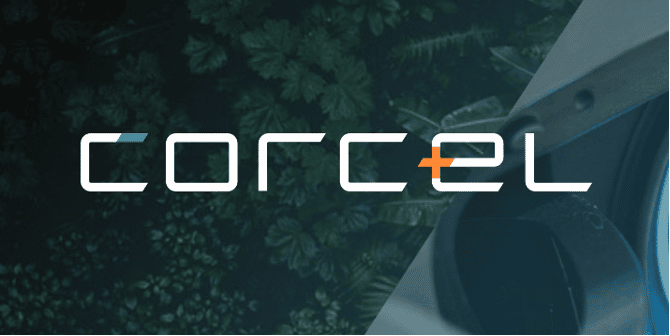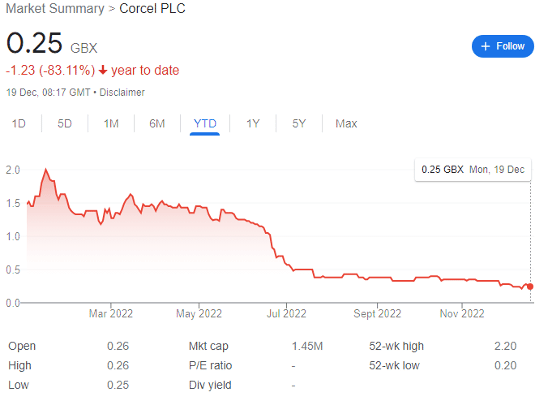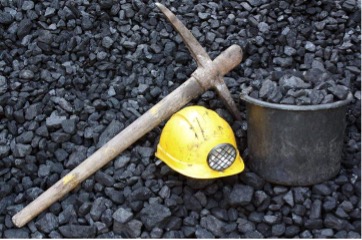Corcel shares are underloved, undervalued, and underappreciated. A perfect combination for high-risk FTSE AIM investors.

As a long-term investor, I rarely trade on leverage in FTSE AIM stocks, preferring instead the old-fashioned method of buying shares and waiting a decent length of time before taking profits. In particular, I enjoy looking for unloved, oversold companies in the commodities sector; there’s a supply gap for most precious metals and critical minerals coming for the 2020s, and the juniors could be where the profits are at.
This brings me to Corcel (LON: CRCL). Long-term investors have not had a particularly pleasant time with this FTSE AIM explorer. Shares are down by 83% year-to-date, and by even more over the longer term. Leaving it with a market cap of just £1.45 million.

But high fear is the exact time to be greedy when investing on the FTSE AIM market.
Corcel shares: investment case in brief
CRCL is a mining and mineral resource developer, with additional interests in flexible energy storage and production.
The company offers exposure to the natural resource space through its battery metals exploration division, while its ‘Flexible Grid Solutions’ division offers near term cash flow through development of UK-based energy storage and production sites.
Corcel has interests in three battery metals projects.
First up is Mambare, a nickel-cobalt deposit located in Eastern Papua New Guinea. Corcel owns a 41% share of the license EL1390 covering some 256 square kilometres through its Oro Nickel joint venture agreement with Battery Metals Pty Ltd, which owns the remainder. The JORC resource constitutes 162.5 million tonnes at 0.94% nickel and 0.09% copper.
Importantly, less than 3% of the 80 square kilometre main target has been drill tested thus far, so the project could develop into a world-class nickel laterite resource over time. Oro Nickel is currently pursuing a mining licence and plans to use Direct Nickel’s nickel laterite treatment process to begin production.
Second, there’s CRCL’s 100% interest in Mambare’s sister project, the Wowo Gap Nickel-Cobalt Project also in Papua New Guinea. This JORC resource comprises 110 million tonnes at 0.81% nickel and 0.06% cobalt, with 28 sub blocks totaling circa 94 square kilometres. Both projects boast an industry standard above the 0.7% nickel cut-off for achieving production.
Corcel is now ‘aggressively’ advancing a Gap Analysis effort to prepare for a Bankable Feasibility Study and ultimately a mining lease application. It plans to develop a DSO operation initially, before using the resulting profits to ramp up production at scale. While there is limited surrounding infrastructure, the company seems confident that the low cost of open pit mining will offset some of the expected set-up capex costs.
Third, Corcel owns a 50% interest in Dempster Vanadium, a vanadium deposit located in Northern Yukon in Canada, comprising 196 minerals claims. The project covers circa 41 square kilometres boasting vanadium-rich metalliferous black shales, showing preliminary 0.26% V2O5.
The project benefits from excellent existing infrastructure, including highways, port access, and a local specialized labour pool.

Then there’s CRCL’s interests in ‘flexible grid solutions.’
Corcel notes that the UK power market is transitioning from hydrocarbon base load generation to renewables power generation — renewable energy has grown tenfold since 2004 and made up 42.8% of UK energy generation in 2021.
The company is investing in solutions to help with stable energy generation and storage, including projects and infrastructure to support overheads and provide cash flow to develop the battery metals projects.
While it’s also considering investments in combined heat and power systems and solar projects, investors should focus on its 100%-owned Burwell Battery Storage, a 50MW Cambridgeshire project with an additional 50MW grid connection at the site.
The project is being advanced towards ‘shovel ready’ status with site planning at a ‘very advanced stage’ amid land lease negotiations. When the project reaches financial close, it’s projected to come online at pace, and within 14 months.
Recent developments
As a microcap worth less than £1.5 million, it’s probably fair to say that potential shareholders may be considering a small speculative position.
If so, I’d draw investors to a few concise points. Of course, there is much more nuance than I can put across here, but the gist is that:
The negative is its financial position: full-year results saw CRCL incur a £2.128 million loss, and the accompanying independent audit warned that ‘the group and the parent company are reliant on securing further financing to meet committed expenditure requirements and working capital needs as they fall due.’
However, loss-making is part and parcel of exploratory work, and Corcel has made efforts to shore up its financial position. On 31 October, it announced a debt refinancing which included ‘a £150,000 immediate repayment with the residual balance of £627,600 being deferred to 31 March 2023.’
Executive Chairman James Parsons noted that ‘the continued support of our key stakeholders, such as the Lenders and the previously announced cornerstone investor, is seen as a testament to the work that is ongoing.’
Then on 16 November, it sold its 40% interest in the 50MW Tring Road Peaker Project outside Aylesbury to Terra Firma for £317,946, with the intention to pay down more debt. CEO Scott Kaintz believes the disposal a ‘significant milestone.’
But on the plus side, CRCL has acquired a 100% ownership of the 171-hectare Mt Weld Project, under a mile from the Lynas Rare Earths Limited’s Mt. Weld REE Mine near Laverton in Western Australia. The company expects to commence a high-impact drilling campaign early in the new year.
Perhaps because of this most recent acquisition, Corcel was able to issue a share placement to raise £466,000 at a whopping 95% premium from AUSPECT Investment PTY Ltd, a step that Kaintz believes confirms ‘the Board’s view of a current valuation discrepancy in the market.’ Again, this cash is due to ‘complete the retirement of the corporate debt due in March 2023 as well as for the development of additional opportunities in the battery metals space.’
Private investors, even at the favourable terms offered, do not invest nearly half a million pounds at an almost 100% premium without cause.
This alone makes Corcel shares worth a speculative investment for 2023.
This article has been prepared for information purposes only by Charles Archer. It does not constitute advice, and no party accepts any liability for either accuracy or for investing decisions made using the information provided.
Further, it is not intended for distribution to, or use by, any person in any country or jurisdiction where such distribution or use would be contrary to local law or regulation.
